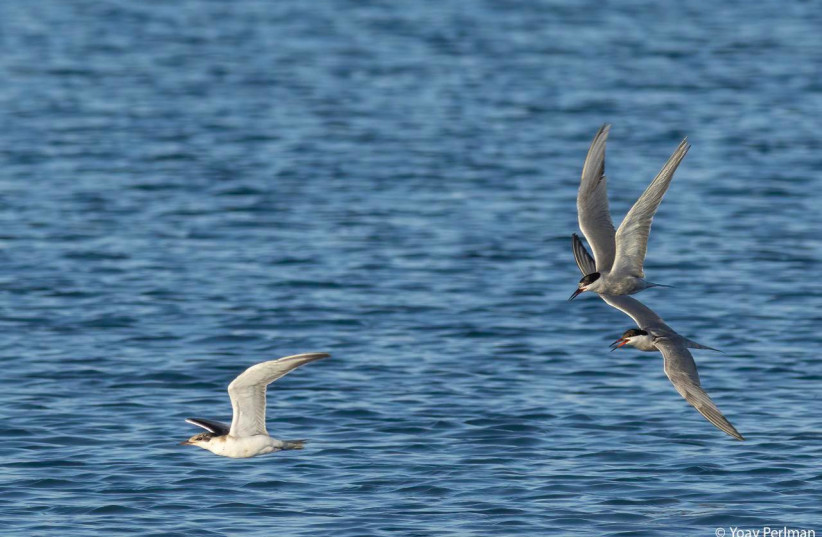Hundreds of seagulls were caught on camera hunting bait balls in the Gulf of Eilat this week. Bait balls refers to a tight pack of fish that swim together to avoid predators.
The northern Gulf of Eilat is a hub for a substantial population of seabirds that migrate from various corners of the Red Sea region, the Society for the Protection of Nature in Israel (SPNI) explained. Diverse species of seabirds, which inhabit areas across the Red Sea, spanning from the Egyptian coasts to Saudi Arabia, wrap up their breeding season and embark on a quest for sustenance. They search for areas with high fish productivity, traversing extensive distances dictated by the wind and currents.
When they identify a cluster of fish, these seabirds swiftly descend, initiating their hunting pursuit.
“In the early hours of the morning, with optimal visibility and the bustling activity of seabirds at its zenith, I discerned a vigorous flurry of gulls and turns darting across the expanse of the Gulf of Eilat,” recalled Dr. Yoav Perlman, director of BirdLife Israel for SPNI, who captured the scene along the Eilat shoreline on camera. “I witnessed a frenzy of both gulls and terns. Beneath this commotion, the sea appeared as though it was in tumult – fish vaulting from the water in a state of panic.
"Beneath this commotion, the sea appeared as though it was in tumult – fish vaulting from the water in a state of panic."
Dr. Yoav Perlman
“From above, the gulls and terns plunged with swift motions, whereas the marine predators lurking below, their identities unknown to me, launched their attacks,” he continued. “After several minutes, the bait ball dispersed, and the gulls resumed their tranquil sojourn throughout the gulf.”

Seabirds wait for their chance to strike when fish jump out of water
SPNI explained that when subaquatic predators threaten bait balls, they respond by springing out of the water. Various species of seabirds seize the moment, swiftly seizing these fish in midair.
“White-eyed gulls, marginally more robust, deftly secure the fish suspended briefly in the air,” said Noam Weiss, managing director of the International Birding & Research Center in Eilat. “The sandwich terns, however, opt for plunging a few centimeters to secure their quarry.
“Meanwhile, the brown booby can plunge to considerable depths,” he continued. “The instant the bait balls ascend into the air, a jubilant festivity commences, with each participant contributing according to their distinctive hunting style and prowess. Over recent years, white-cheeked terns have also initiated nesting activities within Eilat, employing a variety of maritime structures.”